3. The Attractions
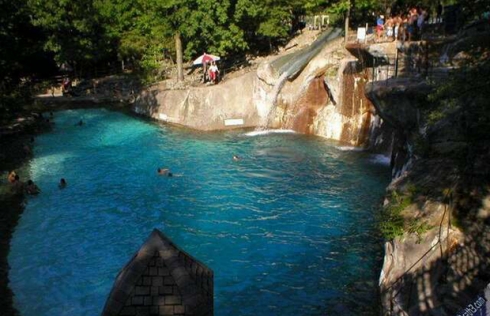
The attractions at Action Park injured hundreds (if not thousands) of people over the years, and killed half a dozen. There were three big areas at Action Park: Motorworld, Waterworld and the Alpine Center. Here are a number of the most interesting attractions from each area, and an explanation of what made many of them so ridiculously dangerous.
I. Attractions by motorMotorworld, which housed most of the attractions that were powered by technology, contained a lot of vehicles like karts, boats and more for guests to ride. It closed in 1996, and was torn apart to make room for restaurants, condominium housing development and the amusement park that replaced Action Park which will be discussed later in this article. Here are the rides that formerly stood in the area, and caused a decent portion of the accidents at Action Park.
Bumper boats
The engines of these frequently leaked gasoline. There was at least one instance when a guest needed medical attention because of too much of it on his skin. The pond was filled with snakes. The boats were very tricky to maneuver. Employees who worked at Action Park in the early 90s had to shout instruction, but even that didn’t work well because of the loud noise of the bumper boats.
LOLA cars
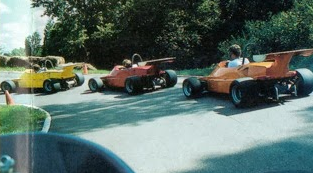
These were miniature race cars with an open cockpit on a long track. It cost extra money to drive the cars, but people were willing to pay, especially the people who knew that you could raise the speed to dangerous levels with the right adjustment. The park management had a microbrewery set up nearby for a time, and employees were known to break in, steal beer and then ride the cars on Route 94 after the park had officially closed.
Sling Shot
This is a bungee cord ride in which two people are shot up into the air, looping upside down. Usually these types of attractions cost a lot more because of insurance issues, but at Action Park the additional fee for the whiplash-inducing attraction was a mere $5.
Super Go Karts
Things called governor devices were meant to keep the speed at or below twenty miles per hour, but many park employees knew that by wedging tennis balls in the right place they could make the small-engine kart hit 50 mph. A lot of the injuries from the Super Go Karts were head-on collisions. Gasoline fuels were another dangerous factor.
Super Speed Boats
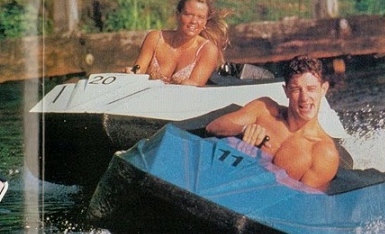
These were in a small pond which most of the staff knew was really infested with snakes. Riders would often illegally use the Super Speed Boats as bumper boats. One really drunk individual needed to be rescued by a lifeguard after his boat capsized after a big “bump.”
Tank Ride
This ride, featured prominently in the TV ads back in the day, let guests drive small tanks for five minutes at a time, shooting tennis balls from cannons at other tanks. When hit, a tank automatically stopped for 15 seconds, giving the other tankers and visitors with cannons outside the arena to pelter the rider with tennis balls. When workers went into the cage to take care of a damaged or stuck tank, they were almost always hit with a multitude tennis balls despite rules prohibiting that. Even if they were trying to be safe, employees were facing more danger from the Tank Ride than attendees.
II. Attractions by waterWaterworld was the water park (though it also contained attractions that weren’t water-based) that held many of the rides that were most responsible for the injury and deaths of guests. Over half of the attractions at Action Park were water-based, but even with that in mind a heavy proportion of Waterworld “enterainment” posed a higher level of danger than all of the rides at the other two lands.
Aqua Skoot
With this ride, visitors would carry a hard plastic sled up to the top of the attraction and go down a slide made up of rollers similar to what you’d find at a factory, and ultimately fall into a pool that was reportedly only a little deeper than a puddle. The idea that when the sled hit the water it would skip across it like a stone, but it didn’t always happen that way. If riders weren’t in a leaned back position, the sled would sink in the water and make the rider get hit in the head, causing many injuries. More accidents occurred when riders would crash into individuals still in the pool.
The Aerodium
This is a skydiving simulator wind tunnel that was invented in Germany in 1984. An Aerodium was ready for guests by 1987 at Action Park, one of the attractions in Waterworld with no water elements. Riders wore special skydiving suits, helmets and earplugs to join a body flight instructor on a netting like a trampoline over a fan. With their help the riders would launch high into the air. Most injuries from the Aerodium came because riders would instinctively attempt to break their falls by extending their arms. That caused all kinds of shoulder dislocation, severed nerves and even almost permanent arm paralysis.
Cannonball Loop
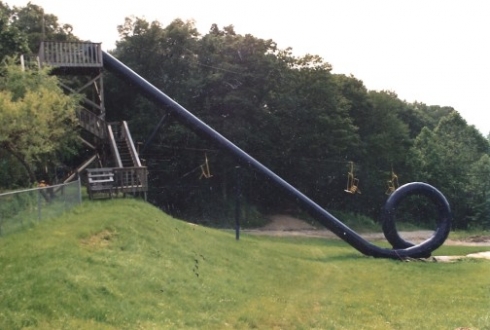
This ride best represents the thrill seeking aspect of Action Park as well as its obvious dangers, even though it was almost never used. In the mid-80s Great American Recreation build an enclosed water side, like a tube. That wasn’t uncommon, but what was very “unique” was a complete vertical loop added that you might come to expect from something like a roller coaster, but never from a slide. It’s not associated with water slides because it’s incredibly dangerous, so much so that the park (obviously recognizing the danger) would (according to some reports) offer a hundred dollars to employees to test it out. The Cannonball Loop was open for a single month in the summer of 1985 before the state’s Advisory Board on Carnival Amusement Ride Safety ordered its closure. Rumor holds that some test dummies that used to uncover the safety of the ride actually got dismembered. Apparently a rider during the month the Cannonball Loop was open got stuck at the top of the loop because of not enough water pressure.
The ride reopened a few other times over the Action Park era, before injuries forced it to shut down again. Some extra safety measures were taken than usual, like weighing down the riders, requiring them to remove jewelry and carefully explaining how to position their bodies. However, the fact that even Action Park would exercise caution shows how insanely dangerous the Cannonball Loop was. Hopefully the new version for the Action Park coming soon doesn’t get the same reputation…
Colarado River Ride
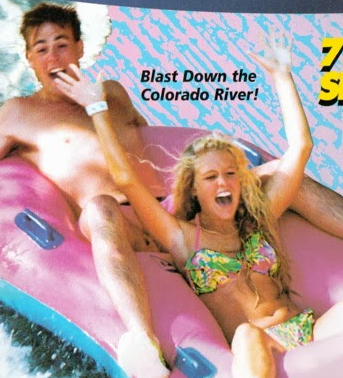
The Colarado River Ride included jagged rocks in its darkened tunnels, as well as a foot-high jump that saw its rafts slam back onto the water's surface.
Diving cliffs
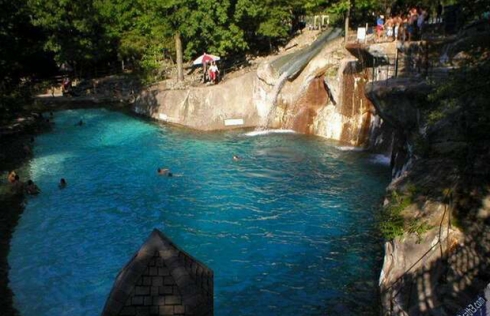
Two diving cliffs, one that was 23 feet tall and another that was 15, stood above a 16-foot deep pool. The danger from this ride was that the section of the pool where people landed wasn’t blocked off, which meant people swimming nearby might be hit by a diver on the diver’s way down. People who couldn’t swim would jump off the Diving Cliffs, which was another danger, because the water was deeper than many expected.
Kamikaze
Ironically, the water slide named Kamikaze was one of the safer ones in Action Park. It featured a few drops and rises, but the landings tended to be smooth.
The Kayak Experience
An imitation whitewater rafting experience, this used submerged electric fans to make the water simulate turbulent conditions. The kayaks would often get stuck or top over. After the second visitor death in the history of Action Park at the hands of The Kayak Experience in 1982, GAR permanently closed the ride.
Roaring Rapids
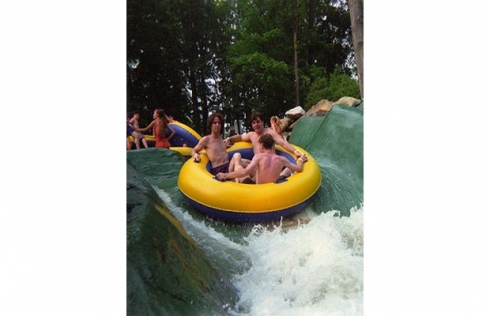
Another whitewater ride, this one used rafts and is responsible for report after report noting fractured bones and dislocated body parts.
Surf Hill
Guests would slide down a water-slicked slope on mats into small puddles on Surf Hill. Because the barriers between the lanes weren’t much to speak of, collisions between people riding at the same time were common. The seventh lane was particularly dangerous. It was known as “the back breaker” because of a special kicker that allowed big jumps and splashdowns. Park employees ate at a nearby snack bar that offered a good view of Surf Hill, excited to see serious injuries or lost bikini tops.
Super Speed Water Slides
Known as Geronimo Falls, these slides took advantage of the vertical slopes close to Action Park so that riders could attain more action than anywhere else thanks to faster speeds. One of the Super Speed Water Slides sent riders almost vertically down. Because of low barriers on both slides, the lifeguards had to inform every user to stay flat on their backs with arms at their sides. Doing anything else would fling them off the ride, so it’s good that Action Park at least exercised some caution in that regard. One of the slides is still around today, known now as H-2-Oh-No, but it’s a lot less steep. Tracks from the previous, more dangerous slides that resided there are still visible.
The Tarzan Swing
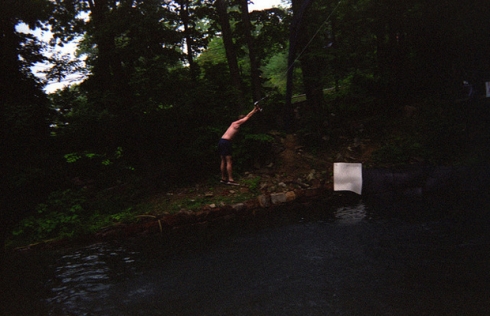
The Tarzan Swing was another attraction at Action Park that was memorable for some good and a lot of bad reasons. It’s exactly what it sounds like: a rope to swing into water with. If people held on to the rope too long they would scrape their toes badly on concrete. The biggest cause of alarm, however, was how extremely cold the water below the rope was. At times lifeguards were forced to jump in to rescue people who couldn’t swim out of the pool because they were so unprepared for the shock of the cold water. In 1984 a man had a heart attack shortly after going on The Tarzan Swing. The cold is believed to be the cause of his death.
The Tidal Wave Pool
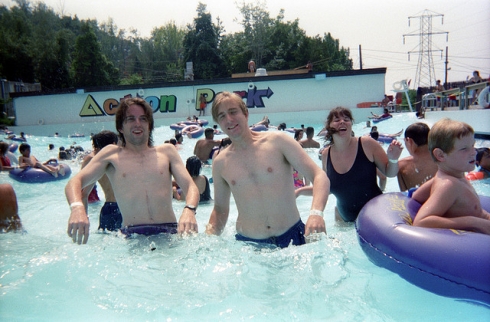
This was easily one of the scariest attractions in the history of theme parks. The first death happened in the Tidal Wave Pool in 1982, and another guest drowned in 1987. Two deaths might not sound like a lot, but it’s only that low a tally because lifeguards were able to save so many patrons from drowning over the years. Twelve were on duty at once, and there were many days where they saved upwards of 30 different people.
Nicknamed “The Grave Pool,” it was 100 feet wide by 250 feet held and commonly held between 500 and 1,000 people. The artificial waves could reach a staggering 40 inches high, and they went for 20 straight minutes. That’s plenty of time for a poor or even a good swimmer to get in some serious trouble. The pool got deeper the further you went into it, and visitors who couldn’t swim well would quickly have water over their heads. Experienced swimmers used to ocean water, didn’t realize that fresh water wasn’t as buoyant, which forced them to do a more exhausting workout than they expected, and it wasn’t safe to be fatigued in an environment like that. Wave pools in general are pretty dangerous, but as usual Action Park was able to take the danger to a whole new level.
Add new comment